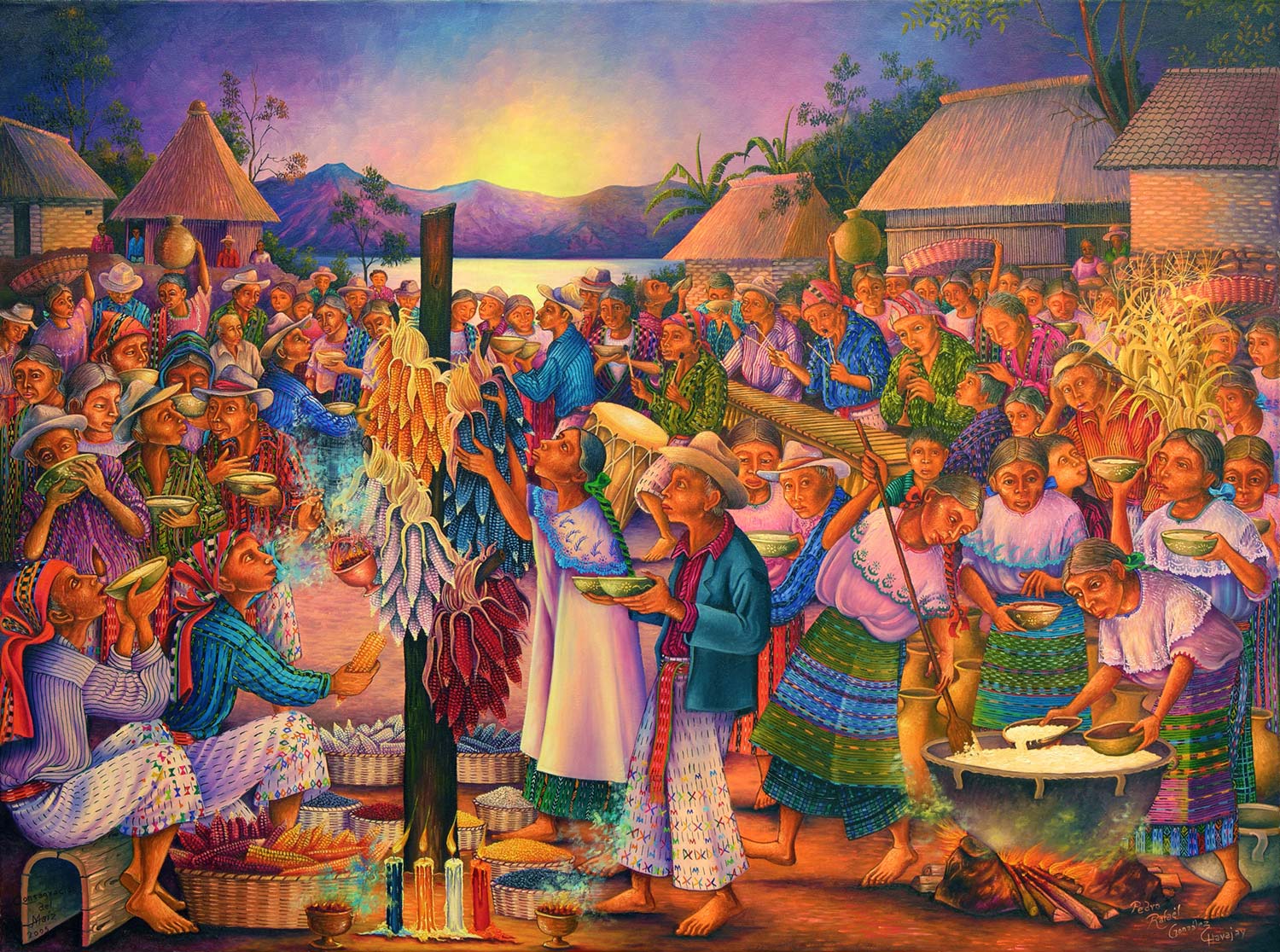Corn (maíz) is the most important food source for the Maya. A plant indigenous to the Americas, maíz was so important to the ancient Maya that it is depicted on ceramics and in murals on temples. The Popul Wuj relates how the first humans were formed out of corn—this is why the Maya call themselves “men of corn.” In Spanish there are four different words signifying the different stages of corn: jilote (green or baby corn); elote (the fresh ears of corn); mazorca (the dried ears of corn); and maiz (the dried grains of corn).
In the Maya towns and villages of Guatemala, most families grow enough corn to last them for the entire year. Maya women in campesino families often soak the corn in quicklime overnight, then get up before the sun rises to grind the maiz into cornmeal, masa. They then make fresh tortillas for the men to take with them when they go to work in the fields. Unlike Mexican women, who often make tortillas using a tortilla press, Maya women form the small, thick tortillas with their hands. The men leave home before the sun rises, having had only coffee and carrying a bundle of tortillas. They arrive in their fields just as day breaks, so that they can work in the cool of the morning before the day becomes too hot. Each man may consume ten to thirteen tortillas while working in the fields.
From the harvested corn, the best ears are set aside to be planted for next year’s crop. Before they sow the carefully selected seed in the hillside cornfields, the communities carry out a ceremony blessing the corn. This rite is a recognition of the essential relationship of the Maya to this staple crop, and it ties them to the creation story written in the Popol Wuj. The ceremony takes place before the rains begin in May, during the first months of the new year according to the Maya solar calendar. Later, each campesino sows the seed with reverence, in the knowledge that he is following in the footsteps of the ancestors.
In Pedro Rafael’s painting, we see the town of San Pedro la Laguna sometime in the mid twentieth century judging from the traje (traditional attire) and from the fact that the houses are adobe with tile roofs or cane with thatched roofs. The women have prepared an enormous pot of atol (a thick, hot drink) made of corn. In the painting the four colors of corn, symbolizing the four directions, are attached to a pole.
Artist’s Statement: “We Maya carry in our blood the knowledge of corn. I remember when my mother was pregnant with my brother, my grandmother prepared for her different types of atol, such as maatz’, q’utuuj, ch’aroon, etc. She also prepared a variety of tortillas for her to eat, in the different colors of corn, such as white, yellow, red, and black. My grandmother also made tamalitos (little tamales) with the herb chipilín, tamalitos with beans, plain tamalitos, etc. This is why I put men of corn in this painting— because we go along from our mother’s womb until our death working on the harvest of corn.”


